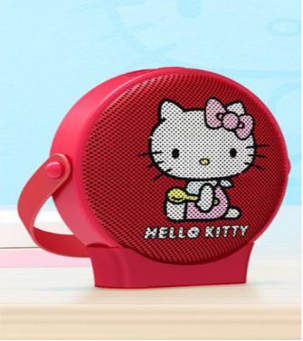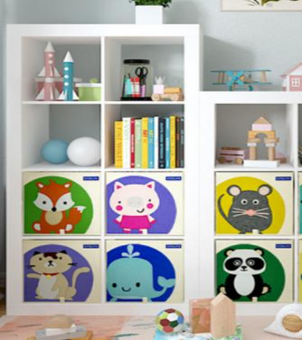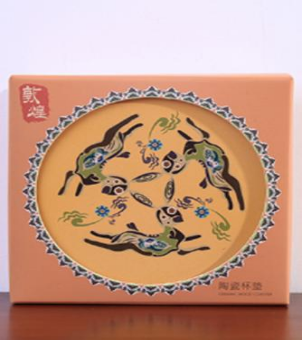
What Are The Reasons For The Odor of UV Flatbed Printers
- By:nocai uv printer
- 2018-11-26
- 1,208
Reasons For The Odor of UV Flatbed Printers
UV printers can produce irritating odors when working, which is very uncomfortable. What causes this? There are a few reasons why UV flatbed printers can emit an unpleasant odor. These include the ink, Curing agents, and Ventilation system. Ozone production is also a concern. Fortunately, there are solutions for these issues. Read on to find out more.
1. First, ask yourself if this is the cause of the ink. UV printers use UV ink, which itself contains a certain smell, and the worse the quality of the ink, the stronger the smell. Once the ink dries, it will also produce odors and may also react chemically with the printing material itself to produce odors.
2. Add additives to the ink. Some users may add auxiliary materials such as ink additives to achieve certain specific effects when printing on a UV flatbed printer. Additives may produce a pungent odor.
3. The chemical reaction of printing materials. Some materials can undergo chemical reactions under the influence of the environment, breaking down related chemicals and producing pungent odors.
4. Ultraviolet rays react with air. Ultraviolet light emitted from the UV lamp tube on the UV printer is exposed to the air, producing mild ozone in the air. This type of taste is relatively mild, the amount is very small, and it is usually invisible.
Further Discussions About The UV Printer
From The Ink
UV flatbed printers emit an unusual odor. However, this odor is not harmful to the environment and does not pose a health risk. Ink odor is caused by the volatile matter released by UV ink before and after curing. UV flatbed printers do not produce the same odor as solvent printing. Moreover, UV flatbed printers can be used in environmental-friendly production processes. UV inks do not require solvents and do not clog the printheads. However, these inks need a long time to cure, which slows down the printing process. This disadvantage is a structural disadvantage of UV printing. Ink formulations for UV printers are determined by the OEMs and printing equipment manufacturers.
UV-curing is the primary cause of ink odor caused by UV flatbed printer. As such, the printing operator should wear protective clothing and keep a distance from the printing platform. This will minimize the risk of exposure to the odor. The odor of ink in the air can be very pungent. Therefore, it is advisable to use high-quality paper to ensure quality printing. While UV flatbed printers produce little odor, they will produce some odors during the printing process. The UV-curing lamp will produce a small amount of ozone when it is exposed to UV light. This small amount of ozone will decompose and produce an odor. In addition, the UV-curing process will affect the substrate and the environment as well.
UV-curing flatbed printers have several advantages over solvent-based flatbed printers. One of them is that they are more efficient and environmentally-friendly. UV-curing inks are more resistant to the elements and produce less odor than solvent-cured inks. They can increase production speeds, which can also reduce the utility bill. Ink odor caused by UV flatbed printing units is often considered a nuisance. Some newspaper workers report respiratory problems and nausea when they smell the printing ink. Some even claim that it is carcinogenic. Although this odor may be a nuisance, press owners are not worried about it. The ink used in UV flatbed printers is also toxic, so it is essential to dispose of it properly.
Curing Agents
Curing agents for UV flatbed printers are used to minimize the odor produced by UV ink during printing. The odor is caused by a reaction of the ink with the printed material. This reaction produces a pungent odor. The amount of ozone produced is small. Curing agents are used to mitigate this problem and make UV flatbed printers more environmentally friendly. Curing agents are necessary for UV flatbed printers because solvent-based inks release volatile organic compounds (VOCs) as they dry on the substrate. This creates an unpleasant odor, which must be prevented by using a curing agent. Curing agents are applied to the print surface before the ink dries and drifts to avoid the odor. This process can take days.
The newer UV ink chemistry makes it possible to produce UV prints without creating odors. The use of cationic inks for UV flatbed printing is popular. This chemistry makes the ink more odor-free and requires less energy. This newer technology is more environmentally friendly because of the lower odor and viscosity. UV flatbed printers produce a thin layer of ink that is cured by intense UV exposure. The resulting film is a polymer that is composed of monomers and oligomers. This polymer is created through photoinitiators, which are small molecules that fragment and react with the UV light. This polymerization process converts liquid ink into a solid film.
The UV flatbed printer is compatible with most substrates up to 50mm thick. However, because of the irradiation of UV light, it can produce odor. Some people are sensitive to odor, but this doesn’t mean that they should avoid UV flatbed printers. UV flatbed printers also have a tendency to produce a high level of dust. However, this can be minimized by using a special type of UV ink that is specially designed to prevent odor. UV-curing inks are not as strong as solvent inks, and they can be easily damaged by overcuring. When choosing an ink, it’s important to consider the type of substrate material. The best choice is one that will produce high-quality prints. The higher the viscosity, the richer the color gamut.
Ozone production
Ozone is produced from ultraviolet light that passes through the atmosphere. The sun produces most of the UV light that is absorbed by the atmosphere. The short wavelengths of UV light, which include those below 240 nm, break down the oxygen molecule, creating ozone. Longer wavelengths, which are more common in UV flatbed printers, destroy the ozone molecule. Ozone is an important element of our atmosphere, as it prevents the harmful UV rays that cause sunburn and DNA damage in living tissue.
The authors of the study recommend that printers that produce ozone be installed far away from office workers. In addition, printers equipped with corona rods can help keep ozone concentrations below the recommended limit. However, it’s important to ensure that the UV lamp used in the printer is inert toward ozone. This way, the ozone will not affect office workers’ health. In addition to producing ozone from UV flatbed printers, there are several other devices that are used to produce ozone. These machines use UV light in the range of 185-240 nm. This light has been proven to be extremely effective in a laboratory setting. Commercial UV lights produce a wide range of UV light; some are tuned to produce 185 nm while others may produce a wider spectrum of UV light.
A UV printer should be purchased from a reputable distributor with expertise in the models. They should have the experience and know-how to help the new owner choose the most appropriate model for their specific needs. A quality distributor should be able to offer reliable assistance during the installation and operation phases of the machine. They should also provide reliable after-sales services. High-quality UV flatbed printers can produce nearly photographic images.
Actual Solutions To Solve The Strange Odors
As we all know, UV flatbed printers will produce some odors in actual printing, and the worse the ink, the stronger the smell. If a salesperson says that UV ink does not produce peculiar smell, this is impossible. The difference lies in the intensity of the smell and the degree of harm to the surroundings. Today, I will tell you what are the reasons for the odor of UV flatbed printers?

How to solve it? In view of the problem of ozone generated by short-wave ultraviolet rays, it is necessary to reduce the accumulation of ozone by modifying the air suction and exhaust method of the workshop operating environment. That is, we often talk about maintaining the ventilation of the production working environment.

Under normal circumstances, the smell of gold and silver cardboard is lighter, while the smell of plastic materials is heavier. When selecting substrates, for gold and silver cardboard, it depends on whether the adhesive used for compounding contains organic solvents, and the firmness of the surface coating; for plastic materials, try to choose some manufacturers with guaranteed quality and use reliable materials.

In addition, keep the surface temperature of the substrate as low as possible to reduce the heat build-up inside the stacked print. Cooling measures can be added, such as adding a conveyor belt, passing cooling water at the bottom of the conveyor belt; using a cooling fan to dehumidify each printed matter before stacking, etc. Such measures are widely used in food, pharmaceutical packaging and other fields.
Reason 3: The UV ink product itself contains a certain odor and will produce some odor after curing, or it will have a chemical reaction with the substrate itself, resulting in an odor.
Choosing a better low-odor UV ink is one of the keys to solving the odor problem of UV printing and final printed matter.

It is worth noting that the odor itself will evaporate quickly and will not stay on the surface of the substrate for a long time.

Well, the above is the whole content. If you have any questions or want to know more information, please leave a message to communicate. For more information on uv led wood printer and uv flatbed printer for wood, please pay attention to Nocai——digital printing machine for wood Manufacturer, the content of UV flatbed printer updated every week~

